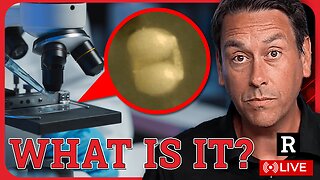Premium Only Content

Automated Hydrogen Generator
Automated Hydrogen Generator
In this video I'll show how I built my Hydrogen gas generator using electrolysis of a 10% Sodium Hydroxide solution with 316 stainless steel electrodes. Unlike an "HHO" generator, this cell separates the hydrogen from the oxygen, so it can be collected in a tank for later use. In the video, I demonstrate its usefulness as a lifting gas for a camera-carrying balloon, but my ultimate goal is to liquify it with a cryocooler at -252C or use it as a working fluid in a stirling cycle to serve as a cheap and plentiful substitute for helium. I'm also interested in using it to manufacture synthetic methane by combining it with CO2 in a process known as the Sabatier reaction.
The theoretical voltage required to separate water by electrolysis is 1.23V, but in reality it will end up being 1.5-2.0 volts, depending on the electrolyte and electrode chemistry, as well as cell temperature. In order to maximize efficiency and minimize the occurance of heating and side reactions, the voltage on a cell should be kept as low above this threshold as possible. Most industrial devices have a cell voltage somewhere between 2.2-2.5 volts. The efficiency of electrolysis is approximately the threshold voltage divided by the cell voltage.
The calculation to approximate hydrogen production rate is:
Liters per hour = V_threshold * Current * 3600 / 287,000 * 24
The production rate of oxygen gas is half this amount.
One potential pitfall of hydrogen storage in pressure vessels or use as a working fluid in cryocoolers / heat engines is the tendency for atomic hydrogen to work its way into the crystal lattice of metals and cause it to become brittle, similar to how adding carbon to steel makes it more brittle. Supposedly this can be mitigated by ensuring the hydrogen gas is totally dry, and aluminum / copper seem to be far less affected by this issue than steel.
It's important to remember that if you're using stainless steel electrodes, over a long period of time, they can degrade and release toxic chromium salts into the electrolyte, some of which may be the hexavalent (Cr6+) form of Chromium. This electrolyte can't be dumped down the drain. To dispose of it properly, you need to evaporate the water and deliver the precipitate to a hazardous waste disposal site.
Aqueous solution conductivity chart:
https://pdfs.semanticscholar.org/cbc5...
-
 46:53
46:53
joegecko's Documentary Channel
1 day agoChemtrail fallout-dangerous mercury super high amounts of Aluminium
224 -
 2:56:40
2:56:40
BigDaddySlick78's Live Gaming Channel
3 hours ago🔴 Call Of Duty Warzone Rebirth Island & Area 99 Live w/ Subs #callofduty #warzone #bo6 #cod
6.38K -
 49:41
49:41
BonginoReport
14 hours agoKristi Noem Honors Angel Mom After Son's Brutal Murder - Nightly Scroll w/Hayley Caronia (Ep.23)
160K76 -
 45:22
45:22
Stephen Gardner
12 hours ago🔥WTF! Dan Bongino’s CRYPTIC ARREST message!
133K124 -
 1:30:16
1:30:16
2 MIKES LIVE
14 hours ago2 MIKES LIVE #203 Lone Survivor with Donna Axelson and Adam Flynn!
80.4K -
 1:18:49
1:18:49
Kim Iversen
15 hours agoEXPOSED: Inside Tim Pool’s Secret Meeting with Netanyahu | Trump’s Tariff Gamble: Boost for America or Death Blow?
215K504 -
 5:28:29
5:28:29
Biscotti-B23
15 hours ago $5.65 earned🔴 LIVE GETSUGA GAUNTLET 🔥 TRAINING FOR RANKED ⚔ BLEACH REBIRTH OF SOULS
79.7K1 -
 1:19:00
1:19:00
Sarah Westall
12 hours agoMassive Spiral Structures Found Under Giza Pyramids, Advanced Ancient Societies w/ Jay Anderson
154K26 -
 54:32
54:32
LFA TV
19 hours agoStrongman Stare Down | TRUMPET DAILY 4.9.25 7PM
110K17 -
 1:35:31
1:35:31
Redacted News
15 hours agoBioweapons over America? U.S. Geo-engineering caught raining mysterious objects over U.S. | Redacted
233K372